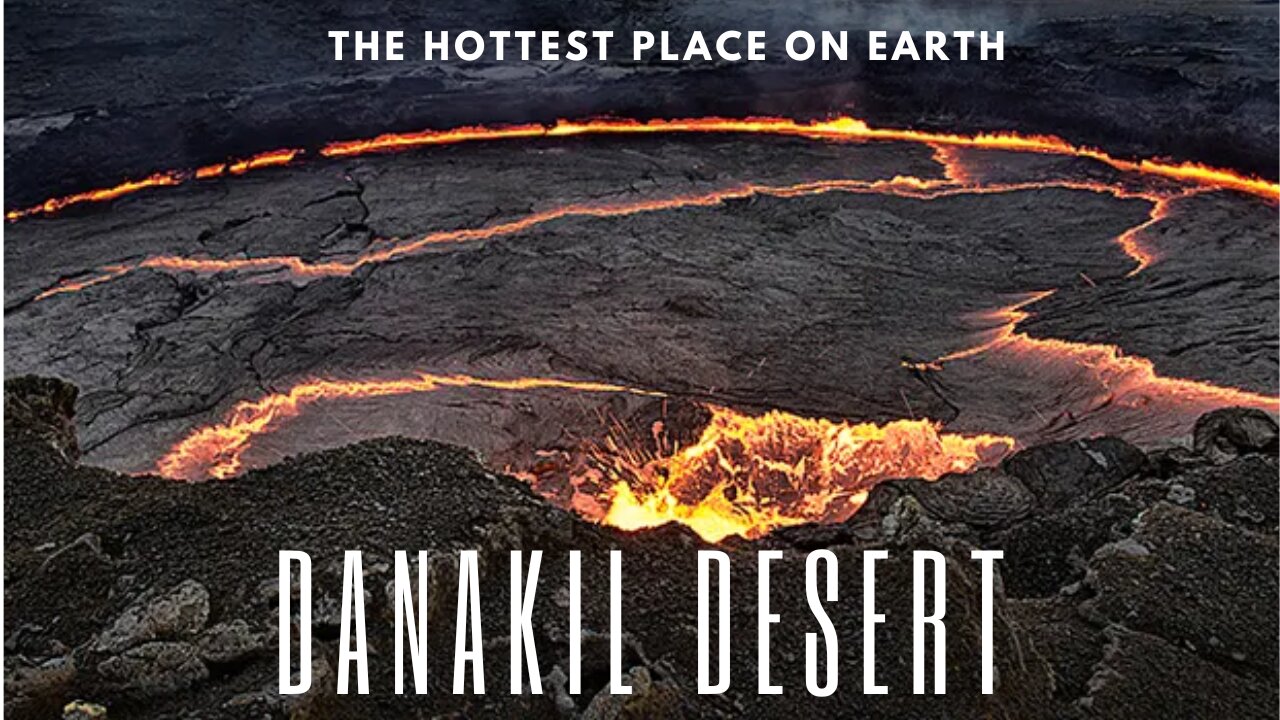Premium Only Content

Hottest Place On Earth - The Deadliest Danakil Desert
The Danakil Desert: Exploration
The Danakil Desert, situated in the northeastern part of the Afar Triangle, stands as a testament to the extremes of our planet. Its unique combination of geological wonders, scorching temperatures, and cultural significance make it a captivating area for exploration and study.
Geography and Geology:
1. Afar Triangle:
The Danakil Desert is a crucial component of the Afar Triangle, a region where the African, Arabian, and Somali tectonic plates converge. The tectonic activity in this area results in geological phenomena that define the landscape.
2. Volcanic Activity:
Volcanic activity is a hallmark of the Danakil Desert. The Afar Depression, a part of the East African Rift System, is home to numerous volcanoes. Erta Ale, one of the most active shield volcanoes in the world, attracts geologists and adventurers alike.
3. Afar Triple Junction:
The Afar Triple Junction, where the three tectonic plates are pulling away from each other, is a focal point of geological interest. This junction has given rise to rift valleys, creating a landscape of breathtaking salt flats and rugged terrain.
Climate:
4. Extreme Temperatures:
The Danakil Desert is renowned for its extreme temperatures. Daytime highs often soar above 50 degrees Celsius (122 degrees Fahrenheit). The relentless sun and arid conditions create an inhospitable environment.
5. Rainfall Patterns:
The region experiences minimal rainfall, contributing to its arid nature. This lack of precipitation plays a significant role in the formation of salt flats and the overall harshness of the climate.
Landforms and Natural Wonders:
6. Salt Flats:
The Afar Salt Flats, a result of the geological activity in the region, are a prominent feature. These flats, rich in minerals including salt deposits, have been utilized by local communities for centuries.
7. Dallol:
Dallol, situated in the northern part of the Danakil Depression, is a surreal landscape of colorful hot springs, salt flats, and mineral formations. It stands as a testament to the dynamic geological processes shaping the region.
Flora and Fauna:
8. Adapted Wildlife:
Despite the harsh conditions, the Danakil Desert hosts a variety of wildlife adapted to the extreme environment. Camels, with their ability to endure both high temperatures and scarce resources, are commonly found in the region.
9. Salt-Resistant Algae:
The salt flats of the Danakil are not devoid of life. Salt-resistant algae thrive in these saline environments, demonstrating nature's ability to adapt to even the most challenging circumstances.
-
 2:12:18
2:12:18
TheDozenPodcast
23 hours agoIslam vs Christianity: Bob of Speakers' Corner
84.9K16 -
 14:36
14:36
The StoneZONE with Roger Stone
1 day agoRoger Stone Delivers Riveting Speech at Turning Point’s AMFEST 2024 | FULL SPEECH
108K25 -
 18:59
18:59
Fit'n Fire
13 hours ago $6.41 earnedZenith ZF5 The Best MP5 Clone available
63.1K2 -
 58:34
58:34
Rethinking the Dollar
22 hours agoTrump Faces 'Big Mess' Ahead | RTD News Update
49K5 -
 5:35
5:35
Dermatologist Dr. Dustin Portela
22 hours ago $2.30 earnedUnboxing Neutrogena PR Box: Skincare Products and Surprises!
62.6K5 -
 11:20
11:20
China Uncensored
22 hours agoCan the US Exploit a Rift Between China and Russia?
74.8K22 -
 2:08:48
2:08:48
TheSaltyCracker
17 hours agoLefty Grifters Go MAGA ReeEEeE Stream 12-22-24
272K709 -
 1:15:40
1:15:40
Man in America
20 hours agoThe DISTURBING Truth: How Seed Oils, the Vatican, and Procter & Gamble Are Connected w/ Dan Lyons
161K141 -
 6:46:07
6:46:07
Rance's Gaming Corner
21 hours agoTime for some RUMBLE FPS!! Get in here.. w/Fragniac
182K5 -
 1:30:48
1:30:48
Josh Pate's College Football Show
21 hours ago $11.54 earnedCFP Reaction Special | Early Quarterfinal Thoughts | Transfer Portal Intel | Fixing The Playoff
112K2